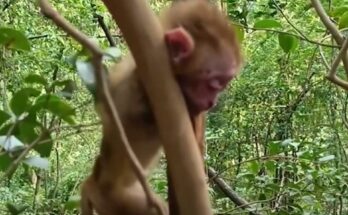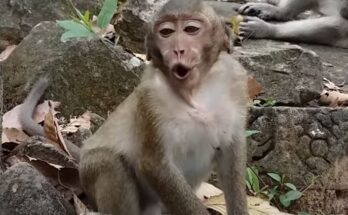In the dense canopies of rainforests and the rugged cliffs of mountain ranges, wild monkeys live a life that is often misunderstood by those who see only their playful antics. Beneath their agile leaps and social chatter lies a world of silent suffering—one shaped by survival, competition, and, at times, heartbreaking isolation.
For many primates, life in the wild is a constant struggle. Food scarcity, territorial disputes, and predation are daily threats that shape their existence. While some monkeys thrive in tight-knit troops, forming complex social bonds, others find themselves on the periphery, ostracized and alone. Young males are often forced out of their birth groups upon maturity, wandering in search of new troops that may reject them. These solitary individuals experience a deep loneliness that echoes through the forests—silent tears shed in the form of longing glances and restless nights.
Even within structured groups, the hierarchy can be brutal. Dominant individuals assert control through aggression, while lower-ranking members endure bullying and limited access to resources. Injuries and disease can render a monkey vulnerable, leading to further social isolation. A once-vibrant creature, full of life, may find itself shunned, left to navigate the wilderness alone.
Beyond natural hardships, human encroachment adds another layer of suffering. Deforestation, poaching, and habitat destruction force wild monkeys into shrinking territories, increasing conflict and competition. Some are captured for the exotic pet trade, torn from their families and condemned to lives of captivity.
Despite their resilience, wild monkeys bear an invisible burden—a life where suffering is endured in silence. Their hardships remind us that nature is not always kind, and that even the most seemingly carefree creatures carry untold stories of struggle and survival.


